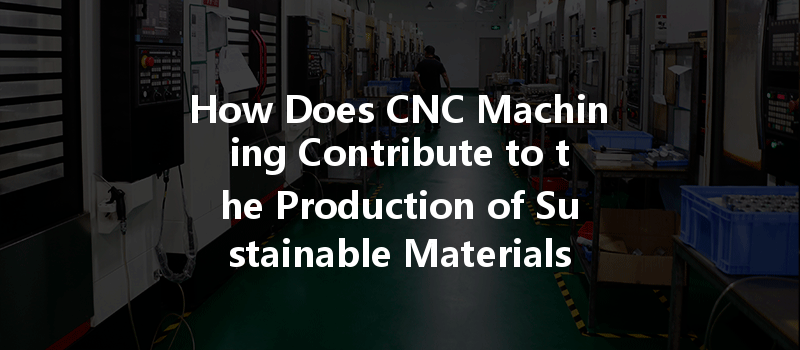Did you know that the global CNC machining market is expected to reach USD 100 billion by 2025? As manufacturing processes evolve to meet sustainability goals, an incredible transformation is taking place in how we produce materials. CNC (Computer Numerical Control) machining, a technology often associated with precision engineering, is stepping into the forefront as a significant player in the movement toward sustainable manufacturing. This blog delves into the intersection of CNC machining and sustainable materials, exploring how this advanced technology contributes to environmentally-friendly practices in manufacturing.
Manufacturers worldwide are increasingly under pressure to reduce their environmental footprint. Issues like waste generation, energy consumption, and the use of non-renewable resources present challenges that need innovative solutions. In this context, CNC machining offers an array of capabilities that can facilitate the production of sustainable materials, aligning economic interests with ecological responsibility.
But how exactly does CNC machining contribute to making manufacturing processes more sustainable? This blog will unpack the intricacies of CNC machining, examine its role in sustainable material production, and offer practical solutions for manufacturers looking to green their operations.
Understanding CNC Machining
What is CNC Machining?
CNC machining is a subtractive manufacturing process that uses computer-controlled machines to shape materials into precise parts and components. It offers a high degree of accuracy and repeatability, making it suitable for various industries, including aerospace, automotive, and consumer goods. By following programmed commands, CNC machines can cut, mill, grind, drill, and perform other operations with minimal human intervention.
Types of CNC Machines
The Environmental Impact of Traditional Manufacturing
Before diving into how CNC machining can be a sustainable alternative, it’s essential to grasp the issues plaguing traditional manufacturing methods:
Understanding the challenges requires a forward-looking perspective on how technology can provide solutions.
How CNC Machining Supports Sustainable Practices
The Importance of Material Efficiency
One of the standout features of CNC machining is its efficiency in material usage. Because CNC machines are programmed to create precise cuts, they minimize the amount of material wasted compared to traditional manufacturing processes. Notably, in CNC machining:
Practical Application
For example, consider a manufacturer of aerospace components. By adopting CNC machining, the manufacturer can minimize the waste of aluminum during production, ensuring that the metal is used efficiently, reducing overall material costs, and decreasing the environmental impact of metal extraction and processing.
Optimizing Power Consumption
CNC machines are designed for energy efficiency, which is a crucial factor in sustainable manufacturing. The continuous advancements in CNC technology incorporate energy conservation measures, such as:
Practical Application
Imagine a factory operating multiple CNC machines that can be programmed for optimal energy usage. By utilizing monitored energy management systems, operators can significantly reduce their energy consumption—leading to both cost savings and lower emissions.
Transitioning to Renewable Resources
CNC machining supports the use of sustainable materials by effectively working with recycled and bio-based alternatives. For instance:

Practical Application
A furniture manufacturer, for instance, could use CNC machining to create pieces constructed from eco-friendly materials like bamboo or recycled wood. The approach allows them to cater to a growing eco-conscious consumer base while promoting sustainable manufacturing.
Designing for Disassembly
CNC machining can help designers create products that are not only high-quality but also easy to disassemble. This facilitates recycling and reusing components at the end of the product’s life.
Practical Application
Take the electronics industry as an example. By using CNC machining to create modular smartphones, parts can be easily replaced or upgraded rather than discarding the entire device, reducing e-waste significantly.
Embracing Industry 4.0
CNC machining aligns seamlessly with the growing trend of smart manufacturing, which leverages data and connectivity to optimize production processes. Key aspects include:
Practical Application
By integrating CNC machining with smart manufacturing techniques, a factory can analyze its energy use across all machines, adjusting processes to minimize waste while optimizing output.
Challenges in Adopting CNC Machining for Sustainability
Despite the myriad benefits CNC machining offers for sustainable manufacturing, challenges exist:
Overcoming these challenges is crucial to realize the potential of CNC machining as a key player in sustainable manufacturing.
Implementation Strategies
Manufacturers should build strong relationships with suppliers that focus on sustainable materials to simplify the transition process and ensure a consistent supply.
Educating staff about CNC machinery and sustainable practices benefits not only the organization’s efficiency but also its overall sustainability efforts.
Many governments offer funding and incentives for manufacturers that adopt eco-friendly technologies. Exploring such options can offset initial investment costs.
Adopting principles from the circular economy can assist manufacturers in rethinking product lifecycle, including maintenance, repair, and recycling.
In summary, CNC machining presents numerous avenues to support sustainable material production in modern manufacturing. The precision, energy efficiency, and adaptability of CNC technology align perfectly with the goals of reducing waste, minimizing energy consumption, and utilizing sustainable materials.
As the global manufacturing landscape continues to evolve, it’s paramount for manufacturers to consider not only the economic implications of CNC machining but its capability to revolutionize sustainable manufacturing practices. By embracing CNC technology and overcoming the challenges of implementation, manufacturers can enjoy not only increased profitability but also contribute to a healthier planet.
Ultimately, this blog serves as a reminder that the adoption of sustainable practices and technologies—such as CNC machining—is no longer a choice but a necessity. As we collectively strive for a greener future, the intersection of technology and sustainability paves the way toward innovative solutions that benefit both the economy and the environment. So, the next time you consider your manufacturing processes, think about how CNC machining can lead the charge toward sustainable production. After all, every small step can contribute to a monumental change in the quest for sustainability.






